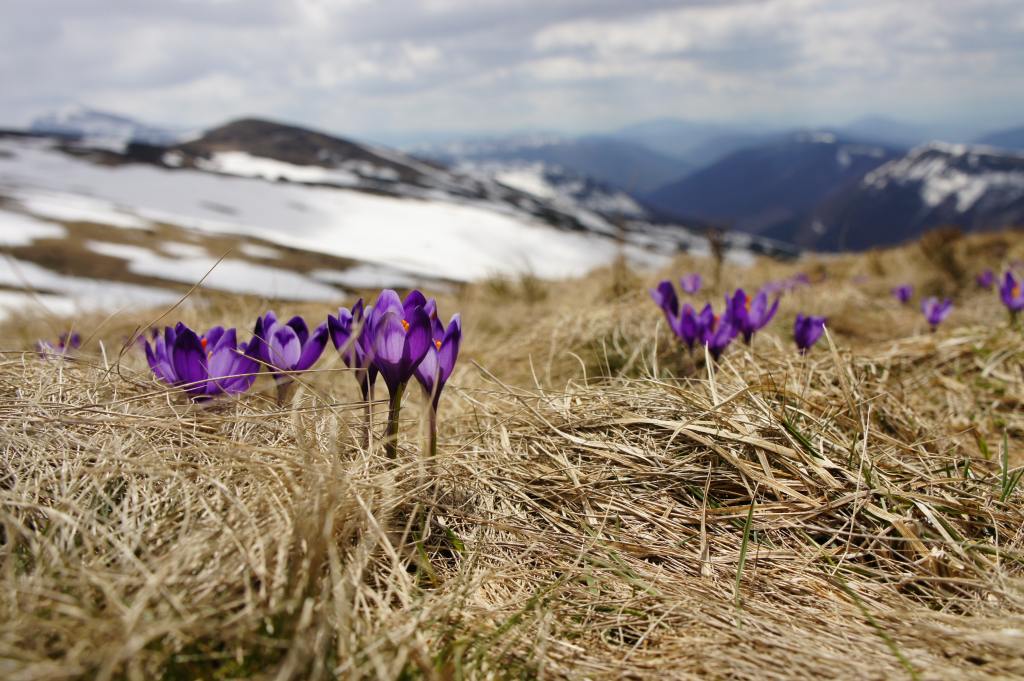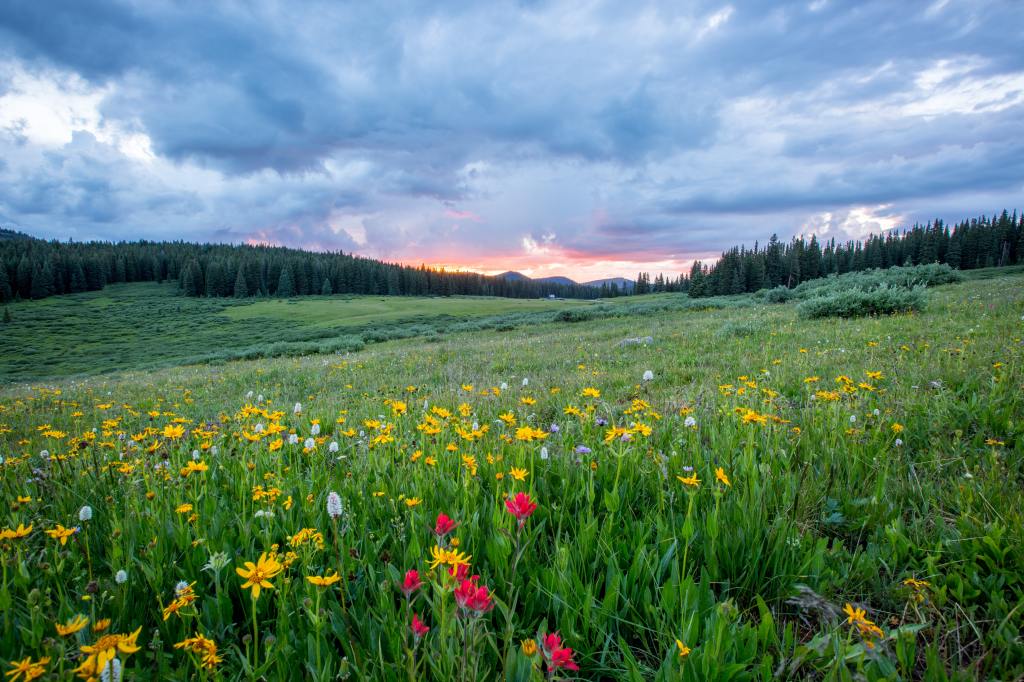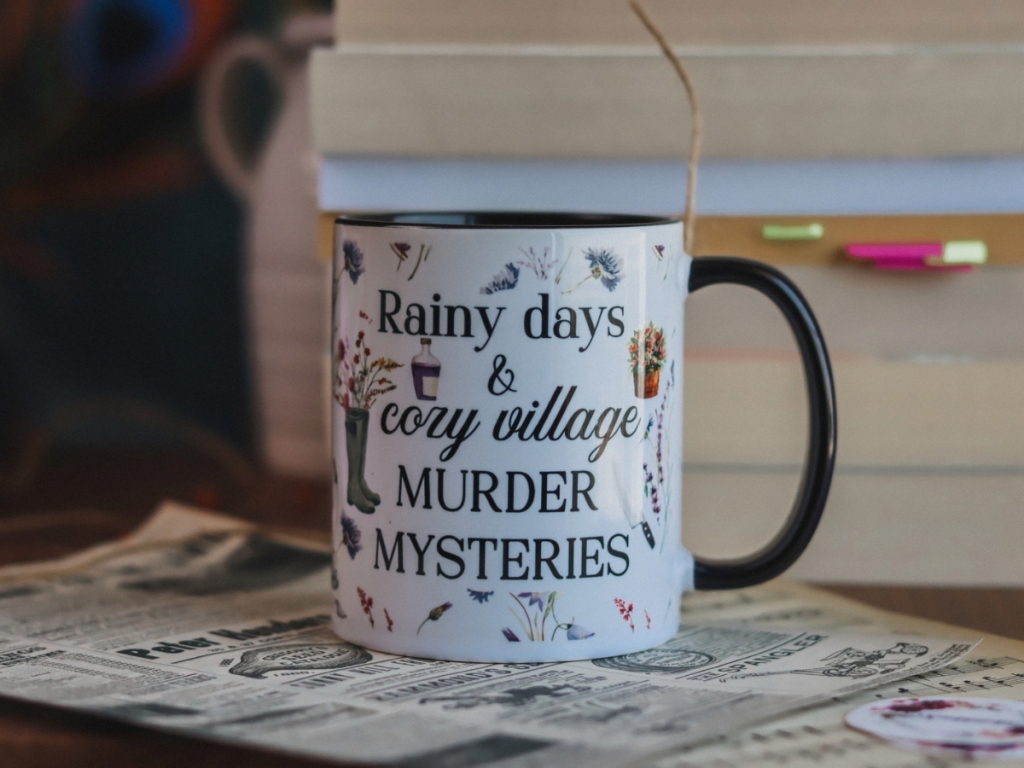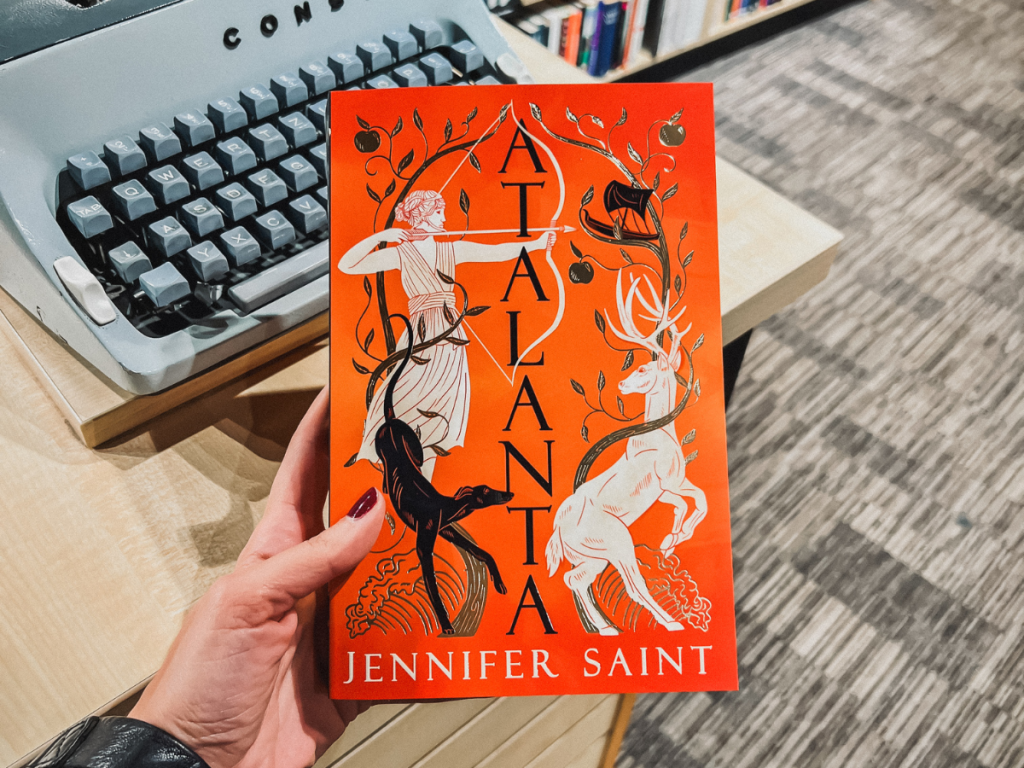‘Just look at those fools,’ Morana sighed, her dark eyes squinting at the cheering group of villagers gathered around a burbling brook.
‘I thought you’d get used to it by now, they burn you and drown you every spring,’ intoned Vesna.
‘And proclaim their undying love for you,’ added Morana.
‘They believe that they are celebrating my victory over you,’ a smirk danced on Vesna’s lips, ‘but what they don’t know is that without you there wouldn’t be me.’
‘They don’t know any better, they can’t see further than their empty bellies,’ Morana shook her head. ‘They lost the ability to look at the nature, to take in its splendour. It’s been ages since I stumbled upon a youth admiring the beauty of winter, the crystallised pines, the plummeting snowflakes in the forest clearings.’
Vesna looked amused.
‘The beauty is in the change, the change itself is beautiful,’ she caressed a swallow that was perching on a blossoming willow tree. ‘Anyway, what do you do with these snow-enthralled youths?’
‘Nothing,’ replied Morana.
‘Nothing?’
‘Precisely, my dear, I do nothing. I leave them be,’ she paused ominously, ‘and let them find their way out of the white woods, on their own.’
Her joyful cackle startled the swallows into a hectic flight.
Vesna could not stop her lips stretching into a sweet smile.
‘You’ll never change,’ she said and took Morana’s pale hand in hers.
‘That’s the point of it all, constancy, repetition, giving them,’ she nodded her head at the reeling villagers, ‘something to expect, to yearn for, and to rely upon, so that they could organise their predictable little lives around our comings and goings.’
The wind whistled in the branches of Iriy.
‘Talking of goings,’ a subtle sadness crept into Vesna’s sunny voice, ‘Stribog’s steed is already here to take me.’
Morana pulled her into her cloaked embrace and let her head rest on Vesna’s warm shoulder. The smell of wild grasses and woodland flowers rose like a whirlwind and snaked around Iriy.
‘Good luck, my friend,’ she whispered.
‘Oh, don’t be lonely in Nav,’ admonished Vesna.
‘Don’t you worry about that. I hear Chernobog has devised new ways to keep me entertained in the world of the dead,’ Morana smiled and looked into the distance. Vesna gave her cold hand another squeeze, turned around, and mounted the stormy steed sent by the mighty wind god. She waited for several heartbeats before prodding the beast into the skies, and let her eyes rest on the swirling form of Morana’s dark cloak as she descended the World Tree and vanished in the dark mouth of Nav.
***

Vesna, Slavic parallel to Greek goddess Persephone, is the goddess of spring, youth, and life. Her existence is intertwined with her diametrically opposite Morana, the goddess of winter and death. They are the forces that represent the change of seasons and that keep the ancient Slavic world spinning in a cycle of death and rebirth. Vesna is one of the most beloved deities among the Slavs because of her beauty and bounty. Her arrival signifies the ending of Morana’s cold and cruel reign, blemished by famine, illness, and death. Slavs, especially Southern Slavs, still often name their daughters after the goddess Vesna, believing that they will be as generous and joyous as the goddess herself.

The Dichotomy between Vesna and Morana
Around the beginning of March, Slavs performed spring rituals that involved the drowning or burning of Morana’s effigy whilst the effigy of Vesna, decorated with flowers and leaves, was carried by a procession marching out into the fields and singing songs of praise to the goddess. The custom symbolised Vesna’s victory over the dark forces of winter, yet the war between the two goddesses was never final. The tension that made the seasons change was a required constant that propelled the Slavic world forward. The dichotomy and the complex relationship between the two goddesses reinforces the idea that people imbued their deities with common human qualities, such as envy, competitiveness, and desire for power.

Appearance
Vesna is represented as a beautiful young woman, usually wearing a white dress decorated with wreaths and flowers. There is a particularly large wreath around the lower part of her waist that symbolises fertility. Her arrival was announced by the migratory birds such as swallows, storks, and cuckoos. She is often portrayed as a smiling, barefoot girl, with long hair and rosy cheeks. Sometimes she holds fruit in her hands, usually an apple, other times she is presented with a swallow and flowers that symbolise spring and marriage respectively.

The Beloved Goddess
Slavs perceive Vesna as their ally. There are numerous prayers and rituals that were performed to summon the spring goddess and force the malicious winter out of the home. It was believed that Vesna had the power to restore health and natural balance, which would result in a harmonious and fertile life. She was especially revered amongst newlyweds. The general rebirth of nature was celebrated in a number of ways. Children would play with the pussy willow catkins and make bellflower wreaths, eggs were painted in red symbolizing the sun and the heat brought by Vesna, girls decorated with flower wreaths and leaves would sing songs to the goddess, and swallows that would start returning from their winter migrations, were sometimes equated with Vesna’s arrival on the wings of Stribog’s wind.
© 2020 Erna Grcic
Sources:
Milosevic, Nikola, et al. Vesna, Stari Sloveni, Staroslovenska Mitologija, Religija i Istorija, http://www.starisloveni.com/Vesna.html.
Parkes, Veronica. “A Cycle of Life and Death: Slavic Goddesses Morana and Vesna.” Ancient Origins, Ancient Origins, 10 Nov. 2016, http://www.ancient-origins.net/myths-legends/cycle-life-and-death-slavic-goddesses-morana-and-vesna-006984.













Leave a comment